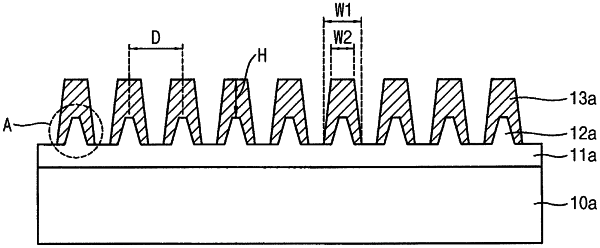| CPC G02B 5/3058 (2013.01) [G02F 1/133548 (2021.01)] | 11 Claims |

|
1. A display panel comprising:
a base substrate;
a thin film transistor disposed over the base substrate;
a pixel electrode electrically connected to the thin film transistor; and
a polarizer disposed over the base substrate and including a plurality of linear metal patterns, and a buffer member, formed of a polymer, having a plurality of protrusions,
wherein a portion of each protrusion is inserted into a respective linear metal pattern, and wherein each protrusion has a tapered shape,
wherein each linear metal pattern includes a lower surface contacting a surface of the buffer member located between a pair of the protrusions and an opposing upper surface defined as a surface disposed on one of the protrusions, and a distance between a first edge of the lower surface and a second other opposing edge of the lower surface is larger than a distance between a first edge of the upper surface and a second other opposing edge of the upper surface,
wherein the first edge and the second edge of the lower surface contact the surface of the buffer member without contacting a linear metal pattern of the pair of protrusions, and
wherein the plurality of protrusions each have a first thickness, and wherein a second thickness between an upper surface of each metal line that completely covers a corresponding one of the protrusions and an upper surface of the one protrusion is greater than the first thickness.
|